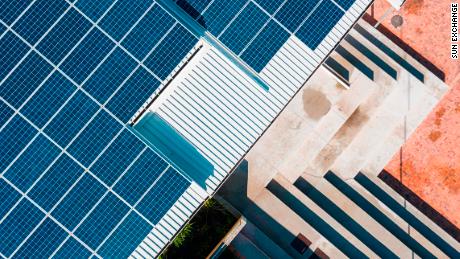TechInAfrica — The online marketplace is always new to people. Immense products are sold to fulfill the needs that never seem to end. This time, Sun Exchange, an online marketplace has launched. It sells solar cells—the parts constructing a solar panel—to online buyers worldwide and lease them to schools and businesses in South Africa. The buyers then accept monthly payments according to how much electricity is produced by the solar panel is used.
This startup idea came from Abraham Cambridge when he moved to South Africa in 2014 to work as a solar engineering consultant, following his 6 years of running a solar installation company in the UK.
“There’s this huge funding gap for commercial and industrial-scale power plants,” he states. He hopes that Sun Exchange will close the solar funding gap between Europe and the US to Africa and connect people to the same opportunity to attain clean energy.
Cambridge quitted his job to develop Sun Exchange and used crowdfunding to help raise money for a prototype website, and then a pilot project for a 15 kW solar plant for The Stellenbosch Waldorf School, which launched in April 2016.
When Sun Exchange approves an installation project, it offers individual cells for sale through its online marketplace at about $6 each. Soon after the cells for a project are sold, the entire system is installed. Cell owners then will receive monthly payments from Sun Exchange for the lease period of 20 years.
Buyers can expect a 10% to 15% return per year, although Cambridge says that it may vary based on the project.
According to Sun Exchange, with their service, schools and other solar power users pay as they go for the energy they use. The rates are typically lower as well.
“The whole point of this is it gives things like schools immediate access to lower-cost clean energy,” Cambridge remarks. “And without them having to pay a penny upfront.”
Over 9,000 people from 145 countries are signed up to Sun Exchange as buyers or leasers on the platform. Its 580,000 solar cells power over 1 megawatt of solar panels at 14 locations, including schools, supermarkets, and a wildlife center.

In 2018, the company secured $100,000 in revenue. The company profits from adding a percentage to the cost of each cell. It also makes money from the service fee of a project that uses solar power from 10% to 20% of the gross lease payments.
Today, about 77% of SA’s main energy needs are provided by coal, as stated by the South African Department of Energy.
Cambridge further mentions that South Africa is warming at twice the global average with regard to climate change. He says, “There are children in the schools that are very aware of what’s going on. They don’t want their world to be powered by coal, they want to be going solar.”
Source: edition.cnn.com
 We just launched our WhatsApp channel. Want to get the latest news from the Tech in Africa?
We just launched our WhatsApp channel. Want to get the latest news from the Tech in Africa?


